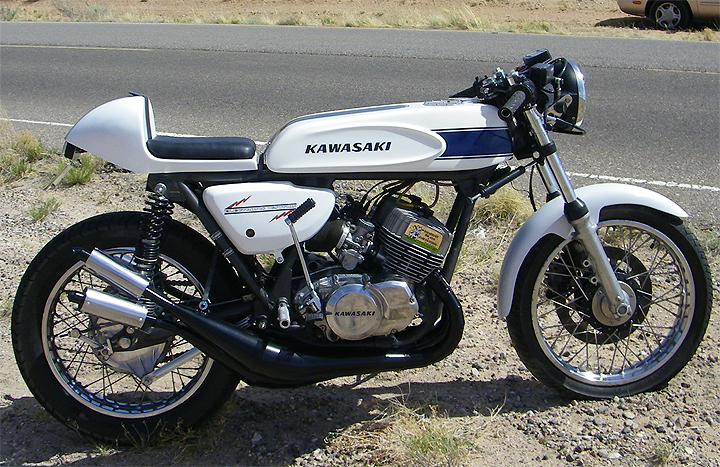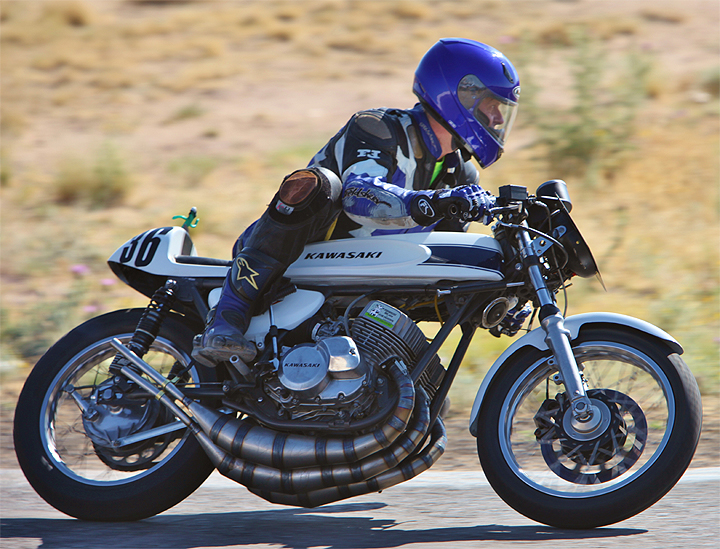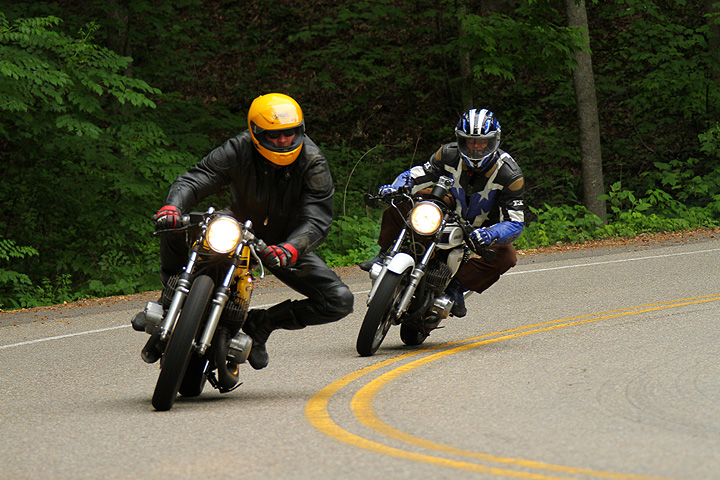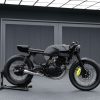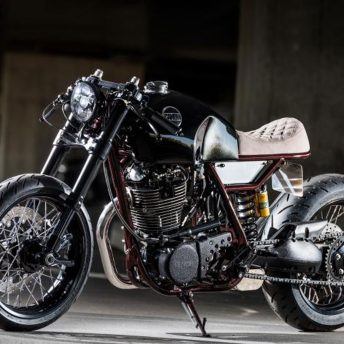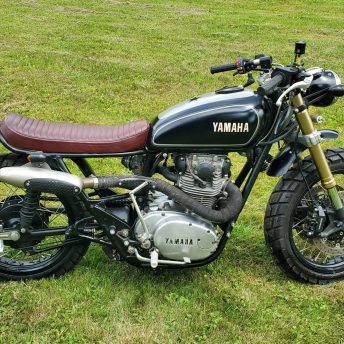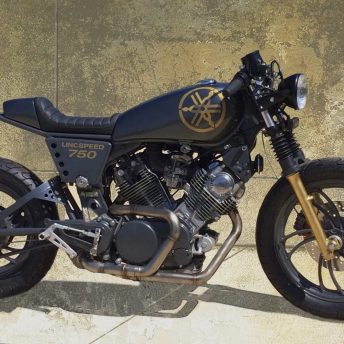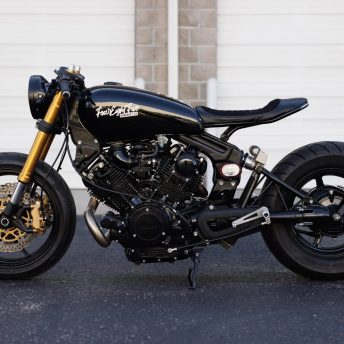For a motorcycle that once laid claim to being the quickest street production bike, the Kawasaki 500 Triples certainly have their fair share of haters. Back in 1968 Kawasaki proved the straightline performance of their 500 triple with a blistering 12.9 second 1/4 mile run gaining them instant popularity. Unfortunately problems with their handling and brakes had tragic consequences and left them with the highly undesirable nickname of “Widowmaker”. One Kawasaki fan by the name of John Aylor set out to prove the triples could be made to handle just as well as they performed and he did it with this bike. Here’s the story from the man himself…
“I started riding in 1972 on a brand new Kawasaki MT1 75cc mini bike. Graduated to a 90cc G3ss and then a G5 100cc enduro. All of which I hopped up in some way or another. in ’78 I picked up a cherry 1973 Kawasaki 500 triple and proceeded to modify it until it had a 2000rpm power band (9000 to 11000), which made riding it a total pain. I sold it and went into 4 stroke land for the next 5 years doing local road racing on my GPz 1100 and 1000J.”
“Traveling and living around the country for work didn’t leave me time to ride, so I was out of motorcycling until 1994 when I bought a non-running ’75 500 triple. I quickly got it running, and of course started planning on how to get more power, but this time, I wanted it useable, no more light switch power! Yamaha got it right with their reed valves so I started designing a reed valve conversion for my 500. It worked so well I then designed kits for all the Kawasaki triples.”
“Doing the installation and machining myself turned into guys wanting me to do porting, and then head reworking and my “hobby” turned into a business. Since 1996, Kawasaki triples have been my world. I missed road racing, so when they finally built a road racing course in Albuquerque in 2000 I had a chance to race again. I always hated the “widowmaker” and “spaghetti frame” monikers the bigger triples were burdened with so I started developing handling improvements. I talked with Kevin Cameron (Cycle World journalist) about it and he stated the frames were no better or worse than anything out there in that time period. The problems were in the suspension, clearances, weight bias, and rake/trail. So after much trial and error, I discovered that it didn’t really take a lot to get the 500-750 triples to handle very well! (I won my class championship first year out!)”
“To get these machines to handle nice, first get the slop out by adding bronze bushings in the swingarm and tapered bearings in the steering head. Then get some fork springs that are set up for your weight. I went with a 18″ front rim to lighten up the steering and have a bit more leverage ratio on the front disc. Some good tires (BT 45’s are very popular) and finally some decent rear shocks. This is where you have to do some calculations to get the correct trail, which is around 100mm on either the 500 or the 750’s. You have to figure out the rear shock length to get the 100 mmof trail. This can be from 1″ to 4″ longer than the standard shock length depending on year and model. These changes will instantly make for a very nice handling triple…no frame bracing is necessary! (on a side note, the ’74 and ’75 750’s could use the shorter earlier swingarm).”
“My current street/race bike is the 1975 500 2 stroke triple I bought in 1994 (pictured). As far as mods to this bike go I started with the aforementioned suspension upgrades. I used fork springs from Works Performance and some new/old Hammerhead Redwings shocks with 1″ extenders to get the trail I wanted. I laced on a stock rear 18×2.15” rim on the front. and used a stock front disc that I cut out and thinned to 1/2 the stock weight. I use a EX 500 caliper with a 12 mm master cylinder for “stoppie” stopping power (this is one of the best mods you can do to a triple). I designed and built all the bodywork out of fiberglass and also laid the paint myself. As far as motor work, The heads have been welded up and reshaped with a squishband and toroidal chamber design with stock compression ratio. Porting is a hot stage II, with my stage II reed conversion with 34mm Mikuni rounds with UNI filters.”
“The bike was dyno’d with 84hp at the rear wheel. With my reed conversion I have enough torque to take off in 4th gear! Handling is crisp and light and as stated earlier, it will do stoppies with one disc. She is a blast to ride!”
You can check out John’s reed conversion kits and the various fiberglass body parts he produces on his website, Aylor Engineering.
